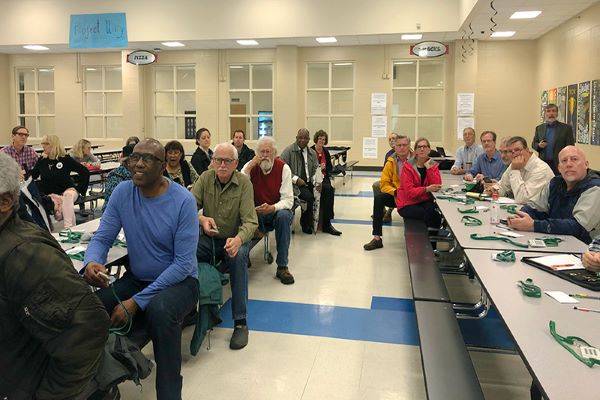Welcome to the October edition of our South Coast newsletter!
As we continue to march our way through fall, I can’t help but feel amazed by how quickly time has flown by since I joined the Conservation League in March—and how much we’ve accomplished during that relatively short time. You can read more from Juliana below about one such success in which we won a significant battle towards protecting Bay Point, but until we see the island resting securely under permanent conservation, our efforts must continue. Thank you for your unwavering support.
We welcome your thoughts on how we can work together to enhance conservation on the South Coast. You can reach us at [email protected] and [email protected] or (843) 522-1800.
South Coast Wild Things

Our state’s coastal plain features a plethora of unique and biodiverse habitats, but our barrier islands are among the most popular. South Carolina is home to 35 barrier islands, and they act as the defender and guardian for the rest of the coast.
They protect the shoreline and our communities from hurricanes and violent storms. They also cushion ocean-borne wave and wind action, which creates the perfect conditions for the formation of salt marshlands on the sides of the islands that do not face the ocean.
Looking out on those wide expanses of grass, mud, and water, you might not realize that salt marshes are some of the most productive ecosystems in the world. They provide what scientists call “ecosystem services” like filtering water, supporting seafood nurseries, absorbing carbon dioxide from the air, shielding against storm surges, and assisting in dune production. And they couldn’t exist without the protection provided by barrier islands.
The islands also have their own habitats, including maritime forests, dunes, sand spits, and beaches. Each provides vital habitat for some of our most sensitive species, such as shorebirds and sea turtles. But those habitats are fragile and transient because the islands are at the whim of the ocean, the most powerful force on the planet.
Literally every natural force—be it wind, rain, or tides—leaves its mark, through erosion and accretion, on these ever-changing places. Each of these forces sends barrier islands marching closer to our mainland. And building structures on these islands, which is happening with greater frequency on our coast, is interfering with the islands’ natural rhythms and speeding up erosion.
We humans love and are drawn to these islands which give us a front-row seat to an amazing natural world. But because of the invaluable benefits that barrier islands provide, we must strike a balance between enjoying these special places and loving them to death.
The Conservation League in the South Coast

That is why the Coastal Conservation League has been working with local partners since 2016 to oppose a plan that would have thrown off this balance by building a luxury resort on the barrier island of Bay Point. Last month, those efforts resulted in the Beaufort County Zoning Board of Appeals voting unanimously to deny the special use permit needed to move the project forward. While there were many scientifically supported concerns about the project as well as resounding local opposition, the most powerful tool in our toolbox to oppose the proposed resort was a lesser-known document called the Beaufort County Comprehensive Plan, which guides growth and development.
The county’s denial of the resort on Bay Point is a prime example of how a comprehensive plan effectively operates. The plan discourages development on conserved lands or in rural areas, such as Bay Point. And Zoning Board members followed the plan’s guidance when denying the permit for the resort.
Many communities in our state, including Beaufort County, are updating their comprehensive plans, as required by state law. These updates rely on public input, which ensures they reflect community needs and desires.
We are engaged in our local comprehensive plan update now, and we will continue to keep you informed to let you know how you can get involved. Be on the lookout for more from us on this important guiding document.
In closing, I’m excited to share some more good news. Last month, the South Carolina General Assembly passed legislation requiring a resilience element be incorporated in all comprehensive plans to accommodate the impacts of climate change. That’s important for all of us, especially for communities that have experienced flooding.
Governor Henry McMaster signed the bill at a press conference at the Medical University of South Carolina earlier this month, and Laura Cantral, our Executive Director, was among the speakers at that event. Learn more about the resilience bill in this story in The Post and Courier.
Events, Activities, Meetings
Due to Covid-19, many public meetings are being canceled or are streaming live to protect public health. Please check the status of each meeting prior to attending.
Beaufort County Council – October 26 and November 8 at 6 p.m., Beaufort County Government Robert Smalls Complex, 100 Ribaut Road, Beaufort. Agendas, when posted, can be reviewed here.
Colleton County Council – November 3 at 6 p.m., Council Chambers in the Old Jail Building, 109 Benson Street, Walterboro. Agendas, when posted, can be reviewed here.
Hampton County Council – November 2 and November 16 at 6 p.m., Council Chambers Administration Building, 200 Jackson Ave, East Hampton. Agendas, when posted, can be reviewed here.
Jasper County Council – November 2 and November 16 at 6:30 p.m., Jasper County Clementa C. Pinkney Government Building, 358 Third Avenue, Ridgeland. Agendas, when posted, can be reviewed here.
